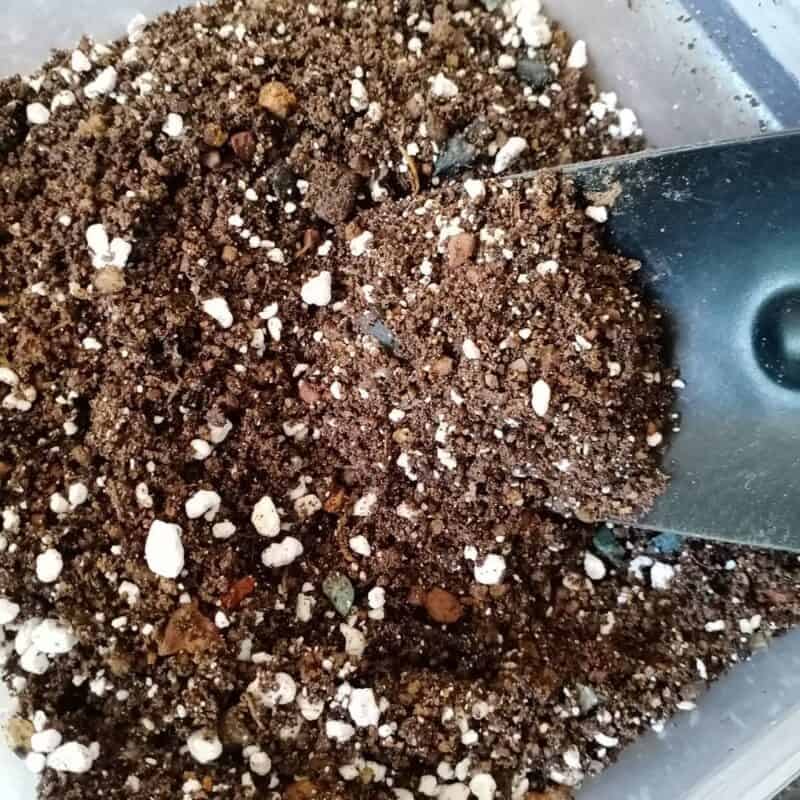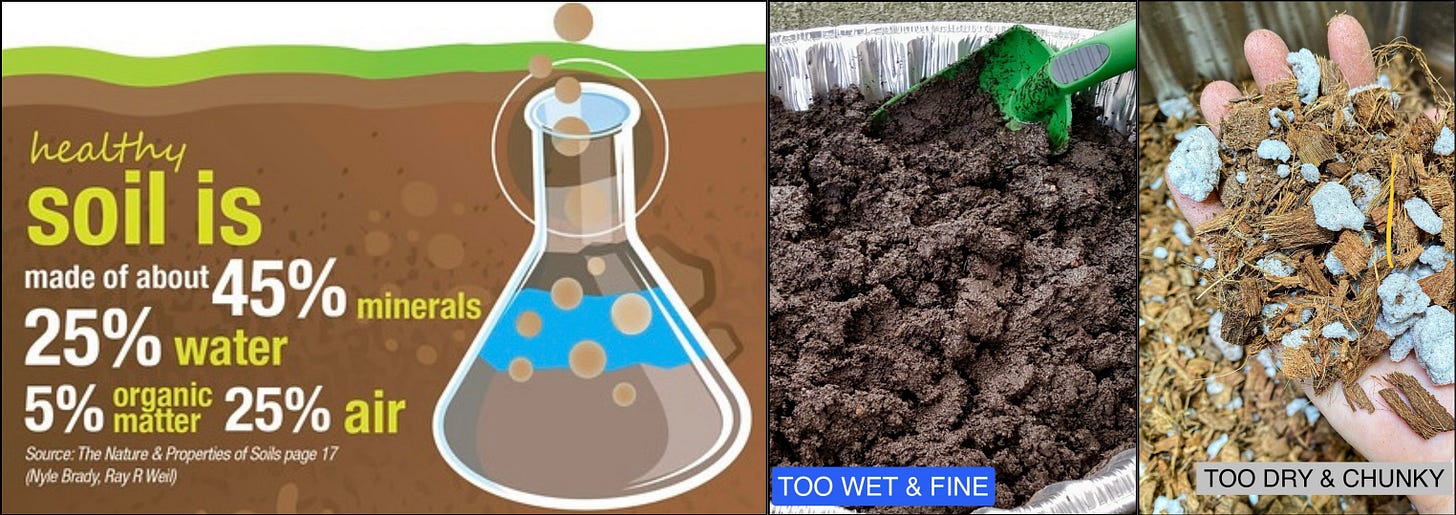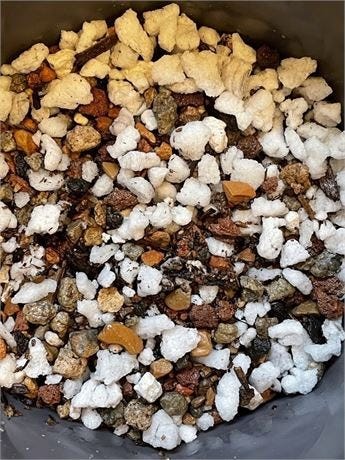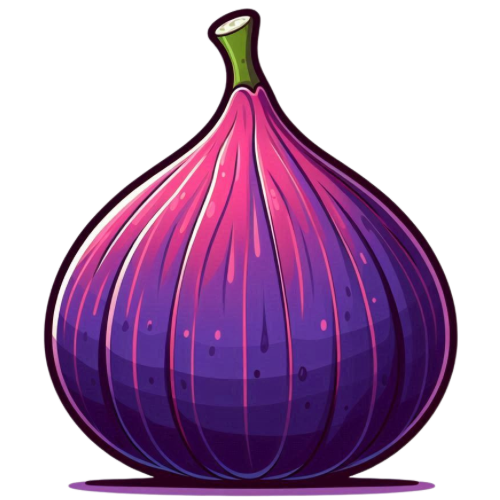It all starts with the rooting mix to facilitate healthy growth. Rooting mixes are the growing medium used to propagate fig cuttings in pots. It can mean success or failure for your cuttings to grow into healthy plants. Excess water is often blamed for cuttings rotting, but really it isn’t the water at all— It is the lack of oxygen that causes tissue death.
Yard soil does not always work the best for this, and standard potting mixes at your local garden center often don’t cut it either for indoor rooting. Why not? Read on to find out…
What’s Wrong With Potting Mix At My Local Store?
Premade & bagged potting mixes often do not have a proper ratio of materials and can be too moisture-retaining. This is definitely so with seed starting mixes. Other mixes contain organic matter which attracts fungus gnats in a large way, especially since many of these bags have been sitting outside in a yard and become a haven for insects laying their eggs.
Our goal is to create a recipe for success which does not include a bug infestation in our house or a bunch of rotted cuttings. Save the bagged mixes for growing outdoors and read on for materials to use in your own rooting mix, which can be used both indoors or outdoors. So how do we get started? There are a few things to understand first, starting with👇.
Balancing Aeration and Moisture
Having a good balance between aeration and moisture is important for rooting success. Air pockets keep roots healthy and moisture stimulates rooting. Note that even natural soil has a balance between air, water, and particulate. This is why plants like it, nature designed it that way.
Often growers propagate in a heavy or a fine mix that retains a lot of water, think seed starting mixes or straight ProMix. This can lack sufficient oxygen though which inhibits rooting. Water loss can also be slower during winter or in humid climates, which can prolong a reduced oxygen environment, leading to suffocation and tissue death.
Using a medium with a higher amount of perlite or other aerating materials helps to keep cuttings alive and keeps roots healthy because they create pockets of air within the fine material. It’s also easier to work with as you don’t have to worry as much about having precise & measured watering.
Why Does Particle Size Matter?
Particle size needs to be talked about. When a tree is planted in-ground, water is able to drain down and away from plant roots. But in a container, water is only pulled to the bottom of the pot where it may or may not find a drainage hole to escape.
And then there is capillary action— this is the same force that pulls liquid slightly up a straw as it sits in your beverage cup. The skinnier the straw the higher the liquid is pulled. Likewise, water gets pulled upward into the pores of the potting mix, it is particularly held in tiny pores. When everything is small and fine, they pull up and hold a lot of water. Any air pockets are filled and the plant material eventually suffocates because the water can’t evaporate fast enough. This is what brings on rot.
This isn’t just with the moisture retaining component. Size also applies with the aerating materials when mixed in with them. The finer the aerating material used, the smaller the air pockets and more water is typically retained with these. Larger particles create larger air pockets so less water is retained. Larger particles throughout the mix also lower the saturated zone in a container. Finer particles raise it.
Can you root successfully in a finer mix like ProMix BX? Yes, of course you can and many have. I’ve even heard of people rooting in 100% peat or coco coir, with no aerating materials at all. But this comes with the caveat that you usually then need to be extremely careful with watering. We’re talking weighing pots on scales, using syringes, being extremely precise & careful so your cutting doesn’t die. It’s just a lot of fuss for something that should be simple. Why risk it and make it harder than it needs to be?
So what size to use? Medium particle size is probably the best to aim for when rooting cuttings. Small, fine particles are best suited to seed starting and are not for cuttings. Too large of particles may not hold enough water to stimulate rooting. Sometimes a combination of fine & coarser materials is necessary due to availability and are typically used together to balance a mix out.
Standard Mixes
A good starting ratio is 50/50 of peat to aerating materials or 60/40 coco coir to aerating materials, and should work in most environments. (Coco coir holds less water than peat, so a lower ratio of aerating materials can be used with it for a standard mix. Premade coco coir & perlite mixes are often in the 70/30 ratio, but can vary.)
50/50 Peat to perlite or 60/40 coco coir to perlite are good standard rooting mixes.
Gritty Mixes
The above ratio can change as much as up to about 10-20% peat or coco coir to 80-90% aerating materials to make a very gritty & aerating mix. It is recommended to keep perlite to about 40% or less in such a mix and to use other aerating components that can retain some water. This is so the mix does not dry out too quickly as cuttings require consistent moisture to initiate rooting. I personally would keep perlite down to 15% or less.
Why use a gritty mix to root? A gritty mix can be fantastic for very humid environments, if you like to water frequently, even every day, or if you have a cutting that you are worried will rot.
One of the main detractors of using a very high ratio gritty mix is that the particles do not clump or hold together on their own. So, one needs to be very careful at up-potting that there is a significant amount of roots to hold everything together when the plant is removed from the pot. Even then, particles will fall out from the root area. This is problematic if the roots are too tender because they can be torn off the cutting. So, it is typically recommended to be very rootbound before the first up-pot using these.
I generally recommend these high ratio gritty mixes for specialty situations because they can be higher maintenance, especially if you’re in a dry climate. They require frequent watering to maintain proper moisture to induce rooting, but can be very successful. Perfect for those who tend to love their cuttings a lot and overwater.
Make Your Own Custom Mixes
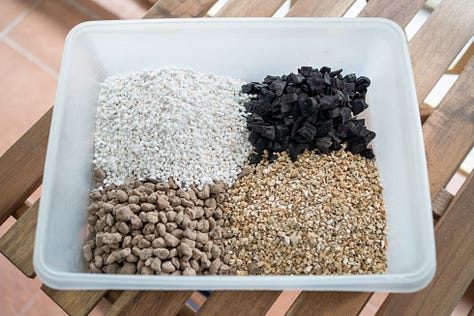
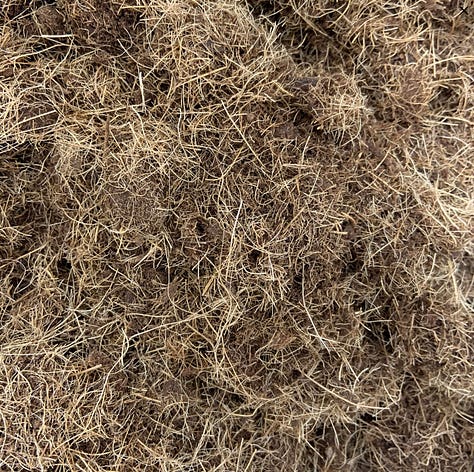
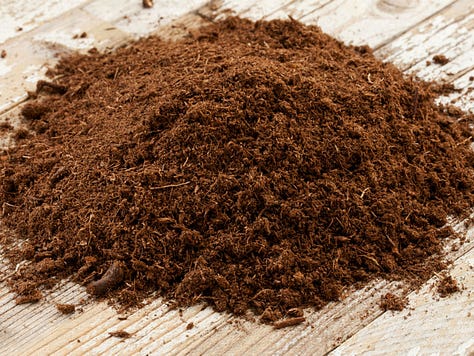
Moisture Retaining Materials:
Coco coir, long-strand and fine
Sphagnum peat moss
Aerating materials, no moisture retention:
Coarse Perlite
Pumice, my favorite over perlite!
Coarse Sand suitable for gardening, such as washed all-purpose builders sand
Crushed Granite
Expanded Shale
Aerating materials, some moisture retention:
(These have some moisture absorption & nutrient retaining ability. However, this is limited & not significant enough to put them in the moisture retention category. Their properties remain highly aerating in general.)
Calcined Clay Pellets, such as EP Minerals Safe T Sorb
Pelletized Zeolite, such as KMI 8x14 or 4x8
Pelletized Diatomaceous Earth, such as OptiSorb sifted
Biochar
Chunky Coco Coir** (soak in water before using)
LECA (soak in water before using)
** Starts off aerating with some absorption but will break down over time becoming only moisture retaining. Watch your particle size in relation to your container size.
Ratios:
Choose one ingredient from each of the three categories above to make a good balanced gritty mix ratio of 1:1:1.
It can be as simple or complicated as you like. You can customize further by changing your ratios or adding in more ingredients.
Standard ratios for rooting mixes are anywhere from 70/30 to 50/50, moisture-retaining / aerating. Heavier gritty ratios can go to 20/80.
It is super easy to create your own custom mix to suit your needs and ingredient availability. Just choose your ingredients and your desired ratio based on the properties you would like it to have, and get to mixing!
Save Time With A Premade Medium Turned Into Gritty Mix
It can save some time to get a premade growing medium that already has some of the ingredients we want as a part of our mix. Premade combinations of coco coir & perlite or peat & perlite can often easily be found at garden centers. All we need to do is add other the components we are interested in using.
Sunshine Mix #4, ProMix HP or BX, or a premade coco coir & perlite mix can be used for a gritty mix. This can be about a 1:1, 1:2 or 1:3 ratio when using these, depending on how gritty you want it.
Example, 1 part Sunshine Mix #4 to 1-3 parts other aerating materials. Because these already have perlite, another moisture-absorbing aerating choice may be better, such as vermiculite or calcined clay.
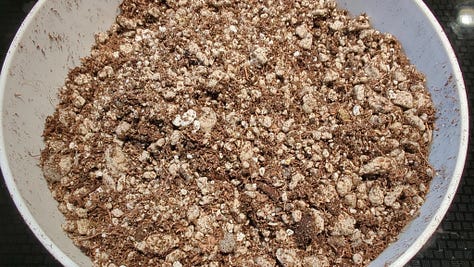
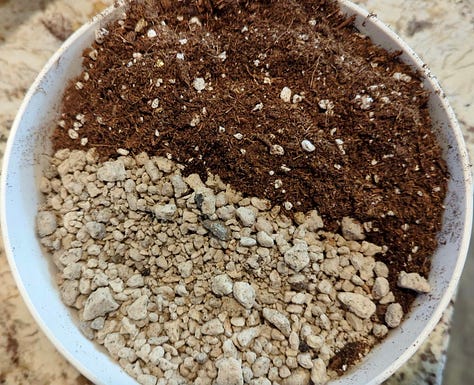
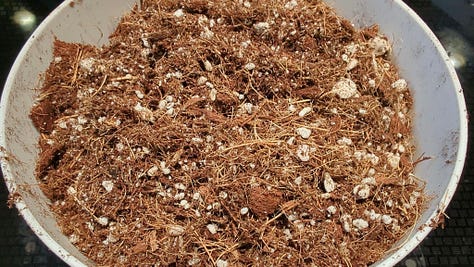
Peat Amounts By Ratio Of Added Material
Sunshine Mix #4 has 70% Peat, 30% Perlite.
»» Add in other material at 1:1 ratio, ends with 35% Peat
»» Add in other material at 1:2 ratio, ends with 23% Peat
PRO-MIX BX has 75-85% Peat, 20-25% Perlite.
»» Add in other material at 1:2 ratio, end with 25-28% Peat
PRO-MIX HP has 65-75% Peat, 35-25% Perlite.
»» Add in other material at 1:1 ratio, ends with 33-38% Peat
This is handy for knowing how much moisture retaining portion you have in your gritty mix.
Should You Add Compost Or Manure?
I do not use organic material in my rooting mixes, such as compost or manures, as they encourage anaerobic bacterial growth to break down the organic matter, and can have insect eggs. This is not the environment we want for rooting. I save the organics for after rooting, once they are outside.
I do not recommend using wood-based materials in rooting or potting mix as they are meant to break down and do not have a long life. I strongly feel that you do not want decomposing matter as the base around roots.
You’ve reached the end friend and these are my favorite rooting mixes 👇
My favorite mix is 65/35 coco coir & perlite when buying premade. I like using pumice instead of perlite when making my own mix and usually do about a 50/50 peat to pumice mix. Another favorite is 1 part peat, 1 part pumice, 1 part coarse vermiculite.
You are officially a rooting mix master for reading this article! Wow and amaze your friends with your growing and rooting prowess by making your own mixes. 🙌🤝👊 Oh yeah 😎



